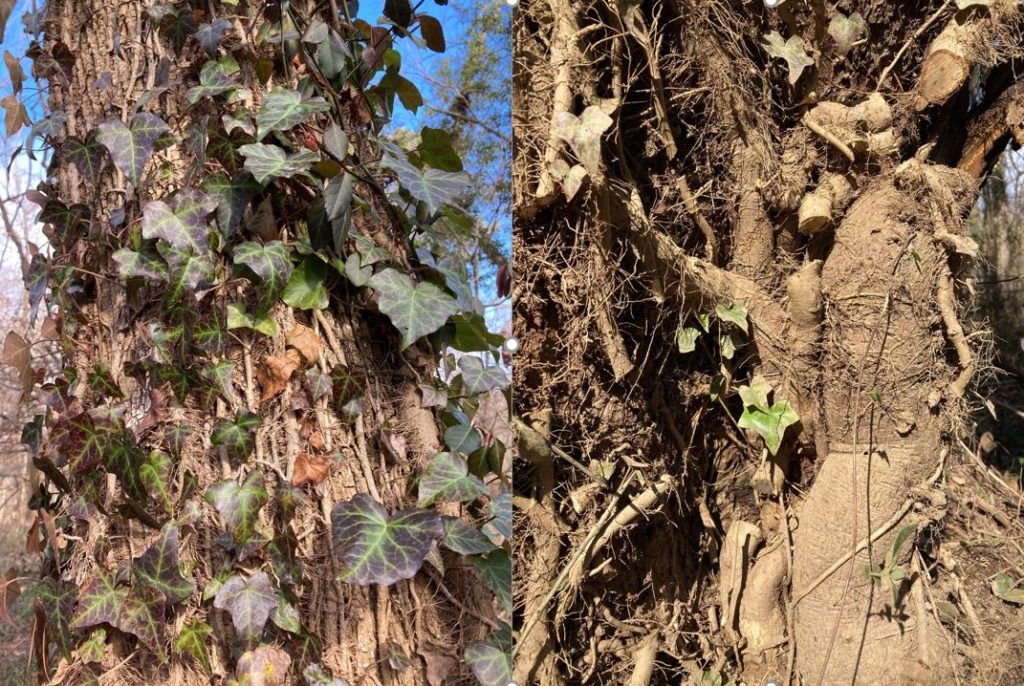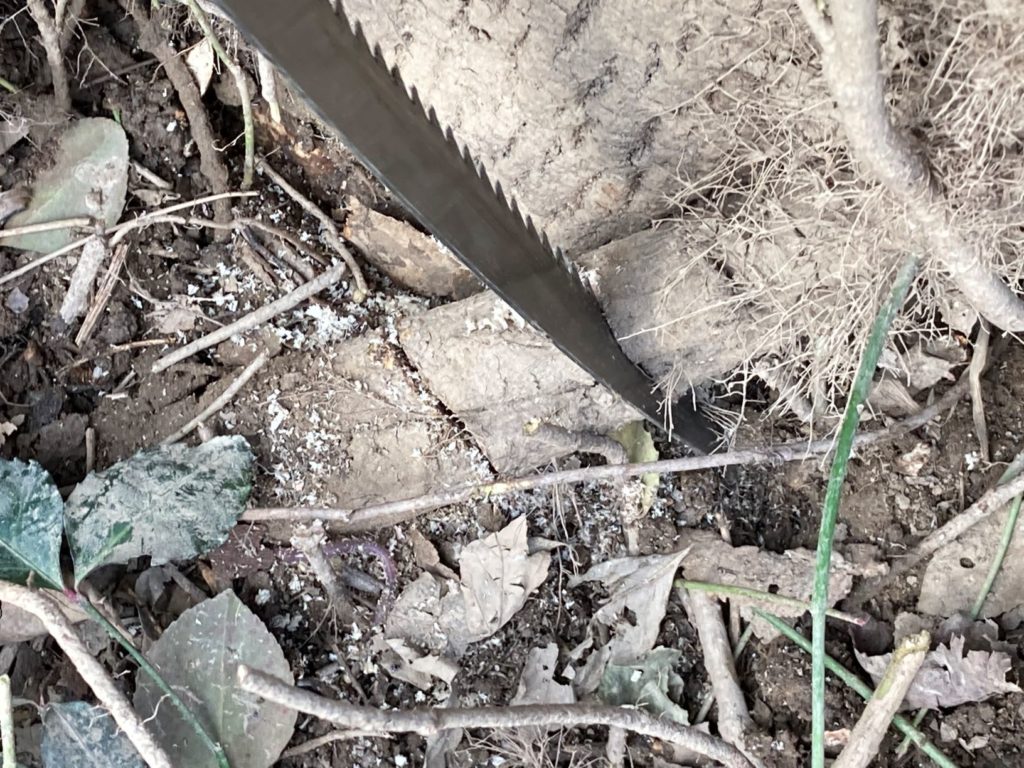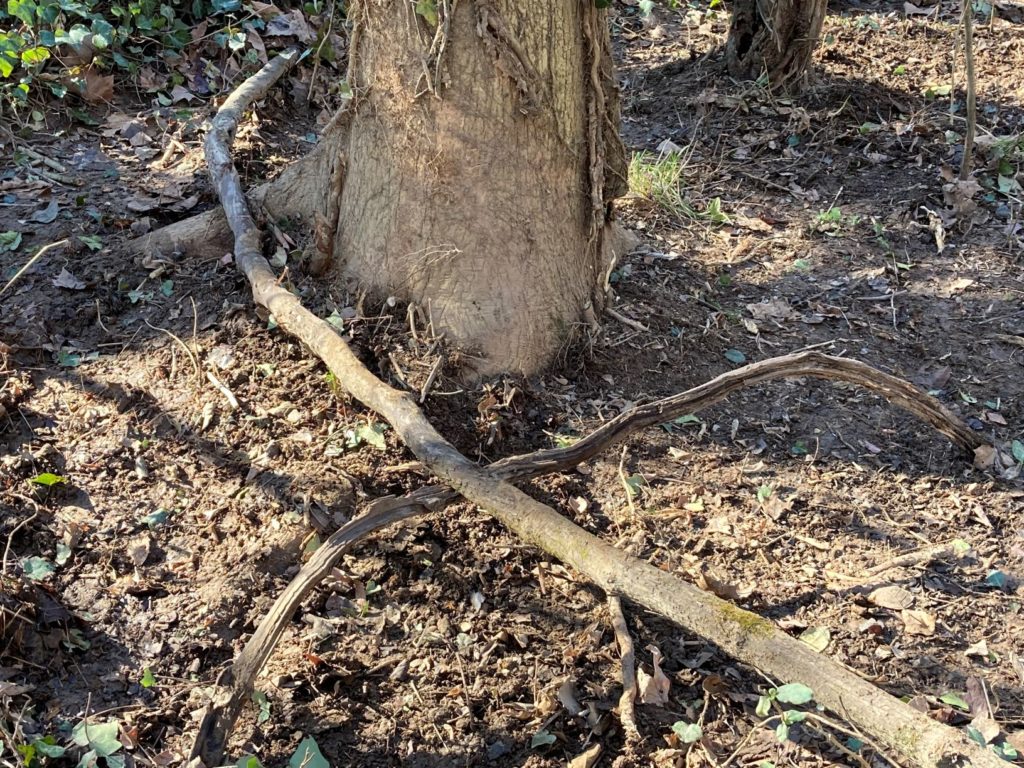
The plight of Richmond’s trees inspired the founding of the JRPS Invasive Plant Task Force exactly six years ago. In winter it’s impossible to overlook how many of our trees are in a death grip of invasive vines, and it’s the ideal time for freeing trees from invasive English ivy and wintercreeper, the two main culprits consuming so much of Richmond’s canopy. In last month’s article, I explained how invasive vine cover harms trees, encouraging Richmonders to take action to stop the destructive onslaught in their neighborhoods. Now here’s a guide for “freeing trees” so you can be a tree hero without ever leaving home.

First, a few basic principles:
- Don’t harm the tree in your effort to save it. Avoid peeling off or cutting into the tree’s bark. It’s already suffered enough.
- Take your time, be patient. Doing a thorough job on just one tree does more lasting good than a slapdash job on a dozen.
- Avoid collateral damage. Protect nearby seedlings and saplings, unless you have a positive invasive ID. Don’t cut vines of native species, like grape. Look out for small critters that may be sheltering under cover of leaves.

- Be careful not to get hurt. Observe best practices with use of tools such as closing pruners and saws when carrying them. If you are working with someone else, maintain safe distances. Consider using knee pads or a cushion and take breaks to stand and stretch.
- Dress appropriately. Regardless of season or weather, wear long sleeves, long pants, and sturdy, closed-toe shoes or boots. Use work gloves that cover your wrists and wash up afterward (poison ivy may lurk even where you don’t see it). Consider using protective goggles or glasses that won’t fog up (freeing trees sometimes sends dirt flying toward your eyes).
Step-by-Step Instructions to Free-A-Tree
- Get your tools ready. Hand pruners are a must plus a handsaw for large vines and others to supplement. A flathead screwdriver can be useful to guard against sawing into the tree’s bark.

- Use pruners to clip small vines. Larger pruners are great for medium sized vines. You may first need to clear leaves, branches, etc. away from the base of the tree to get a better look at your task. Cut the vines at the base of the tree and again higher up. Be sure to get all of the vines, which sometimes fuse together. If possible, pull out the vine by the roots, but do not pull vines off of the tree’s bark.

- Use a handsaw on vines too thick for pruners, making two cuts to remove a large cross section. If possible, find a spot where there is a gap between the vine and the tree. You may insert the flathead screwdriver or spackling knife between a vine and the tree to help prevent the saw from making contact with the tree’s bark. Find the easiest, most effective angle.


- Clear invasive groundcover surrounding the tree for an area of at least two feet from its base, more if possible. This is where many Free-A-Tree efforts fall short. Failing to create this buffer results in the vines rapidly retaking the tree. Be as thorough as possible, pulling up every vine that will let go. Remember to protect seedlings and saplings.

- Wintercreeper can present a special challenge. Advanced wintercreeper often encircles a tree in dense coils and it is more difficult to pull up by the roots than English ivy. Sometimes the only way to get a hold of it is to cut through it with shears or a handsaw. Then pull back.

- How to handle invasive debris. Do not throw freshly removed invasive vines into the garbage and do not leave them to sit on the ground. They will re-root given half a chance, especially if in contact with damp soil. Keep them off the ground and let them dry out and wither before disposal or allow them to decompose in place.
- Monitor and repeat as necessary. Watch over your freed trees for regrowth of invasive vines.

More From Urban Forest Dweller
admin
October 17, 2024 · 3 minute read
James Luggen
October 17, 2024 · 2 minute read
admin
October 3, 2024 · 2 minute read


